Muscle Cars in Blue – History of Dodge Police Vehicles – Part 1
Part ONE: 1956-1975
Big Cars, Big Blocks and Big Brakes
We’ve all been there. Blue lights fill the rearview mirror, palms sweat on the steering wheel and you nervously fumble to kill the ignition. Tag, you’re it. You haven’t yet met the police officer who pulled you over. He’s still inside the police cruiser entering your license plate number and confirming proper dash-cam function. What happens next is up to you…and what you just did.
Routine traffic stops have been part of life since the first privately owned automobiles triggered the need to keep disorderly drivers in check on public roadways. Through it all, local, state and federal police agencies have been partial to Dodge vehicles for their affordability and ability to absorb abuse while keeping pace with fleeing law-breakers.
Though far more than a simple traffic stop, as far back as 1916, Dodge touring cars played a vital role in helping U.S. Army Brigadier General John Pershing repel Francisco “Pancho” Villa’s paramilitary forces during the Mexican Revolution. Along with convoys of trucks, Pershing’s fleet of Dodge vehicles outran – and outgunned – its horse-riding adversary and marked the first motorized military action in U.S. Army history.
Back on Main Street U.S.A., the job of policing America’s growing network of public roads fell to local and state authorities, which employed cars of virtually every make during the pre-WWII years. Though no single carmaker held a firm lock on the law enforcement market at the time, Ford’s 1932 release of the so-called Flathead V8 was a landmark event. Offering big-car performance for the price of a six, good guys and bad guys loved them. Many Depression-era police chases pitted flathead against flathead.
In the bigger cities, where anti-mob efforts demanded large groups of boots, fists and Tommy guns, huge Cadillacs, Lincolns and Chryslers combined room for up to eight officers with 8-, 12- and even 16-cylinder engines to provide the necessary pep when fully loaded with G-Men raiding a gin joint or speakeasy. Since these massive machines were quite expensive, they were only justified in affluent big cities like Chicago, Detroit and N.Y.C.
World War II changed everything. Beyond the many advances in engine, transmission, metallurgy and gasoline technologies to emerge from the conflict, post-war prosperity brought urban sprawl and a need to connect it all together. On June 29, 1956, president Dwight D. Eisenhower signed the Federal-Aid Highway Act which funded construction of 41,000 miles of high-quality, multi-lane roadways from coast to coast. These roads were ripe for a new kind of car, one that could cruise all day at 70 mph in comfort and style.
Naturally, as interstate drivers eagerly took to these miracle-smooth ribbons of tarmac, American carmakers increased engine size and vehicle performance. The great Detroit Horsepower race was on. Quickly, horsepower ratings crested the 200-, 300- and even 400-horsepower thresholds. Irresponsible speeders needed to be caught and would-be evaders had to be apprehended. A new breed of police vehicle arose to meet the need, the highway patrol car.
Chrysler Corporation’s first law enforcement special arrived in 1956 as the Dodge Coronet 230 Pursuit. Though Dodge (and Chrysler, DeSoto and Plymouth) had offered extra-duty taxi cab and export-based component packages that were adapted for law enforcement use for decades beforehand, the 1956 Dodge Coronet 230 Pursuit was the first Chrysler Corp. offering to include everything in one model. It was the beginning of the Dodge Police Pursuit dynasty that includes today’s HEMI®-powered 160 mph Charger Pursuit.
Available with two-doors for ticket writing on the highway, or four-doors for patrol involving likely arrest and prisoner transport, the 1956 Coronet 230 Pursuit model included heavy-duty brakes, extra-ply high-speed tires, reinforced wheels, stiffer springs and shock absorbers, a faster steering ratio, roof bracket inserts to support externally mounted lights, antennas and sirens, heavy-duty seat frames and upholstery, stain resistant floor mats instead of cut-pile carpeting for longer wear, maximum-duty electrical systems to support add-on radio communication, flasher, siren and loud speaker systems, and much more.
And putting the “230” in the 230 Pursuit’s name, motivation came from a 315-cubic-inch Red Ram V8 with a single Carter WCFB four-barrel carburetor, 8.0:1 compression, hydraulic-lifter camshaft, dual exhaust and polyspherical (not hemispherical) combustion chambers. With 316 foot pounds of torque, the polyspherical-head 315 had plenty of guts to keep pace with all but the hottest showroom stockers. For ultimate police power, Dodge offered the 260-horsepower Super Red Ram 315 at extra cost.
With HEMI heads, a single four-barrel and a solid lifter cam, the Super Red Ram was the same engine fitted to 1956 Dodge D-500 Coronets (Dodge’s first “package muscle car”). Records show that 200 of these D-500 powered stormers were purchased by the California Highway Patrol (CHP) to even the odds in and around Los Angeles, the “birthplace of hot rodding”.
With the 1956 Coronet 230 Pursuit, Dodge salesmen finally offered one-stop police car shopping to all levels of law enforcement. Plymouth joined the game in 1957 when it’s Fleet Sales Division added police business to its traditional taxi and export programs. Chrysler followed in 1961 with the Enforcer line of law enforcement cars based on its entry-level Newport and Windsor models.
Through the decades since, Dodge (and Plymouth and Chrysler) police cars played a major role in promoting public safety and catching bad guys. In this first installment of our three-part review of behind-the-badge Dodge offerings, lets concentrate on some highlights from 1956 to 1975. And remember, only newbies call Chrysler Corp. police cars “Interceptors”. Truth be told, that’s an F-word (as in F-O-R-D nomenclature). Since the Dearborn bunch trademarked that name, around Dodge, Plymouth and Chrysler squad car fans, we call ’em Pursuits (the name was used at various times by Dodge, Plymouth and Chrysler through the years).
Elwood: It’s got a cop motor, a four hundred and forty cubic-inch plant. It’s got cop tires, cop suspensions, cop shocks. It’s a model made before catalytic converters, so it’ll run good on regular gas. What do you say? Is it the new Bluesmobile or what?[Jake lights a cigarette using his own lighter.]
In the next installment of this three-part roundup of Dodge Police Pursuit history, we’ll examine how police vehicles kept pace with the trend toward smaller, “greener” cars while still staying one step ahead of speeders.

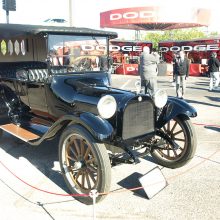
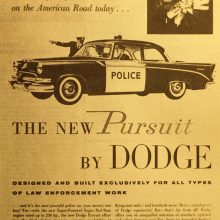
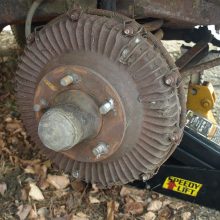
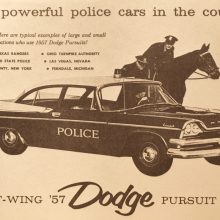
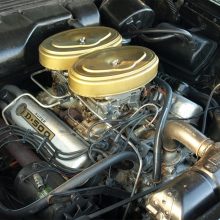
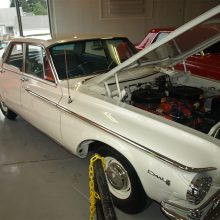


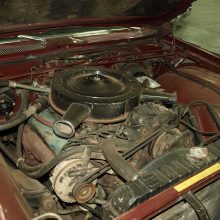
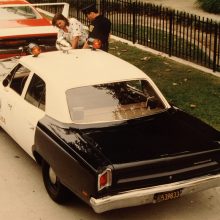
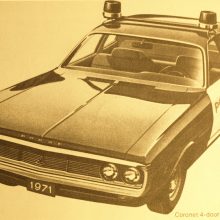

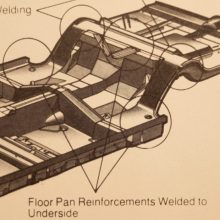

0 Comments